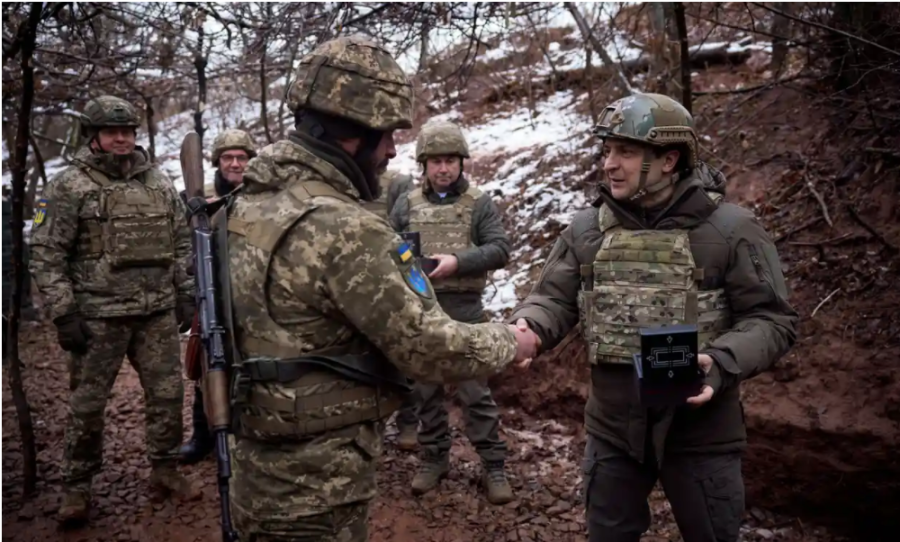Ukraine Russia: Modern Conflict
March 2, 2022
In early December of 2021, the American Central Intelligence Agency began to urge a warning over the large amount of Russian troops that had been sent to the Ukrainian border. This mirrors a similar event back in 2014, when Russian President Vladimir Putin had sent ‘10,000 troops to the Ukraine border’ (theguardian.com 2014). This is a conquest that Putin has wished to fulfill for quite some time, to regain territory and therefore Russia’s status as a major world power. However, NATO is obviously protecting their own as well as aspiring allies, and providing weaponry, security, and support to their allies.
The relationship between Ukraine and Russia has been long winded and has resulted in many different outcomes. Through many years of being ruled by many different Western European countries like Poland, Romania, and Czechoslovakia, Ukraine later became a part of the Soviet Union (the S.S.R). A few years later when the Soviet Union began to fall apart after the Cold War, Ukraine was able to declare sovereignty, and then a month later, full independence. Changing their name from the Ukrainian Soviet Socialist Republic, to Ukraine, they were able to finally separate themselves from Russia as an independent country (Britannica). Dr. Pajakowski of the Saint Anselm history department says that “Ukraine was a long time apart of Russia, and at one time Russians and Ukrainian people would have seen themselves as one people. It’s no6t that simple, but there would’ve been no clear distinction.” Ukraine breaking apart from Russia, along with the entire Soviet Union, was a major downfall of Russia. “The disintegration of the Soviet Union left Russia with a vastly depleted population, territory and economy. It also diminished Russia’s superpower status” (Sugden, Trofimov, Gordon, 2022).
This seems to be a rerun of 2014, when Putin annexed the Crimean peninsula. His desire to take over more of the west has been prevalent since the loss of the Ukraine, but the physical take over began in 2014, when the first non peaceful act of takeover began. One soldier was killed and one wounded as Russian soldiers rushed the Crimean capital building in 2014 (White, 2014). As a result of this past conflict, Putin’s threat of invading is being taken extremely seriously.
With the United States world power status, President Biden has been active in trying to condemn Russia not to invade, and that when they would proceed, it would be with the lack of United States military, resources, and support. However, the United States had provided resources and weapons to Ukraine, as they have been aspiring NATO alliances for quite some time. Dr. Pajakowski of the Saint Anselm history department, states that “Ukraine is not an ally formally, but it is a friendly country. They have talked about joining the European union, they have talked about aligning with the NATO alliance, and our policy is to be open to that. We are not formally bound to protect them from an attack, but obviously we do not want them to.” While maintaining our allies in Europe, President Biden decided not to send combat troops, but urged the economic penalties that would be granted to Russia, prior to their invasion of Ukraine. (Mauldin, Gordon, Puko, Wall Street Journal 2022). The United States democracy has long emphasized the importance of allies and our friends in Europe, and therefore the inclination to keep them safe. Dr. Pajakowski follows up to say that %



